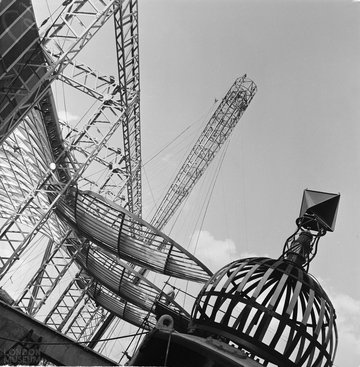
Festival of Britain
‐
A national exhibition held in 1951 to showcase Britain’s art, science, technology and design
Place of event
South Bank Centre, London; Glasgow; Castlereagh, Belfast.
About
One hundred years after the 1851 Great Exhibition, the post-war Labour government decided to hold a national exhibition focusing on British design, technology, industry, science and the arts, in an attempt to promote a feeling of recovery and achievement as Britain was rebuilding after the Second World War.
The new exhibition space was built on London’s South Bank. Representatives from India, Pakistan and Sri Lanka refused to take part. This led to fractures in the idea of a British-led Commonwealth rather than a multiracial Commonwealth. The Chairman of the Council for the Festival of Britain was Indian-born General Lord Ismay, who had served as Lord Mountbatten’s chief of staff during the handover of power and partition of India and Pakistan in 1947.
The exhibition had a budget of £12 million and many critics were concerned that the money should have been spent on welfare and housing instead. Although the main exhibition site was based in London, in an attempt to celebrate the nation there were also touring elements and related events across the four nations. Nearly 8.5 million people visited the exhibition in London and it ran from May to September 1951.
Lord Hastings Lionel Ismay
Conekin, Becky, 'The Autobiography of a Nation': The 1951 Festival of Britain (Manchester: Manchester University Press, 2003)
Littler, Jo, ‘“Festering Britain”: The 1951 Festival of Britain, National Identity and the Representation of the Commonwealth’, in A. Ramamurthy and S. Faulkner (eds) Visual Culture and Decolonisation in Britain (Aldershot: Ashgate, 2006), pp. 21–42
Multiple files, London Metropolitan Archives, London
Multiple files, National Archives, Kew, UK
AAD/1994/10, Photographs, Journals and Ephemera related to the Festival of Britain, Archives of Art and Design, Victoria and Albert Museum, London
Image credit
Festival of Britain, by Henry Grant
HG1318/20, © Henry Grant Collection/London Museum, https://creativecommons.org/licenses/by-nc/4.0/
